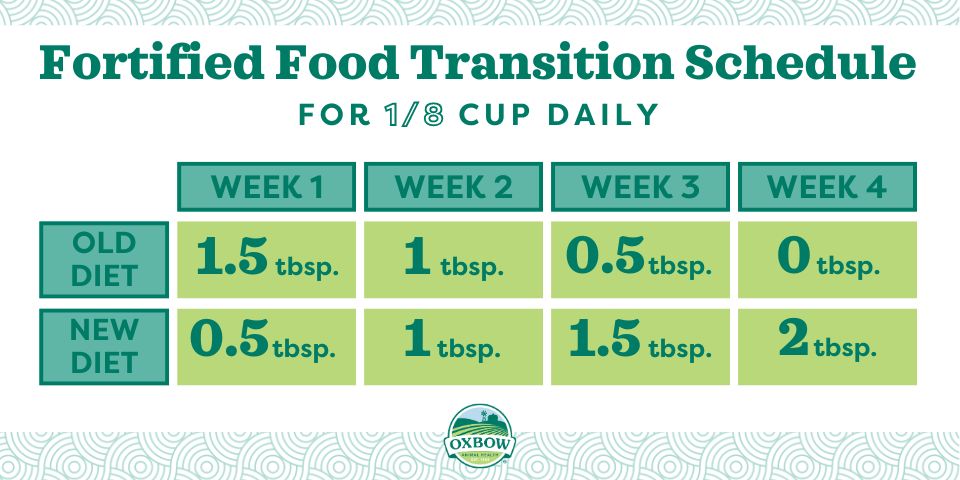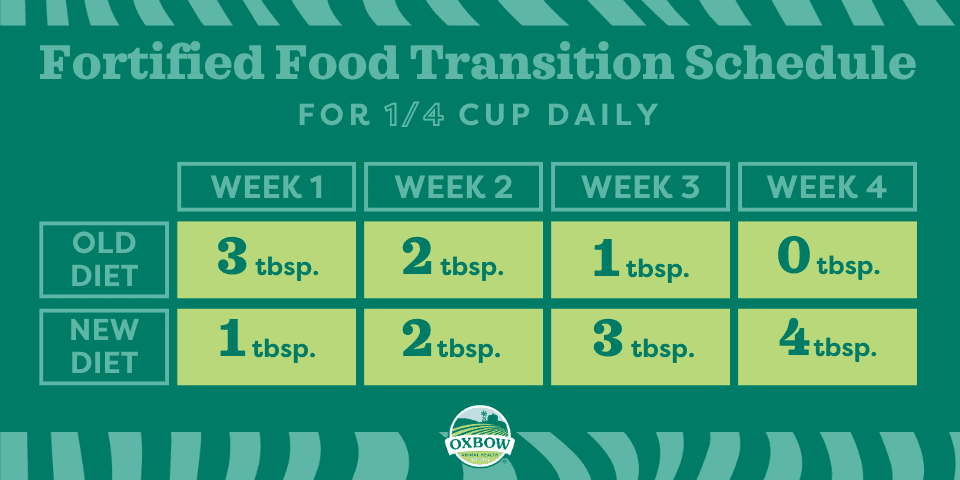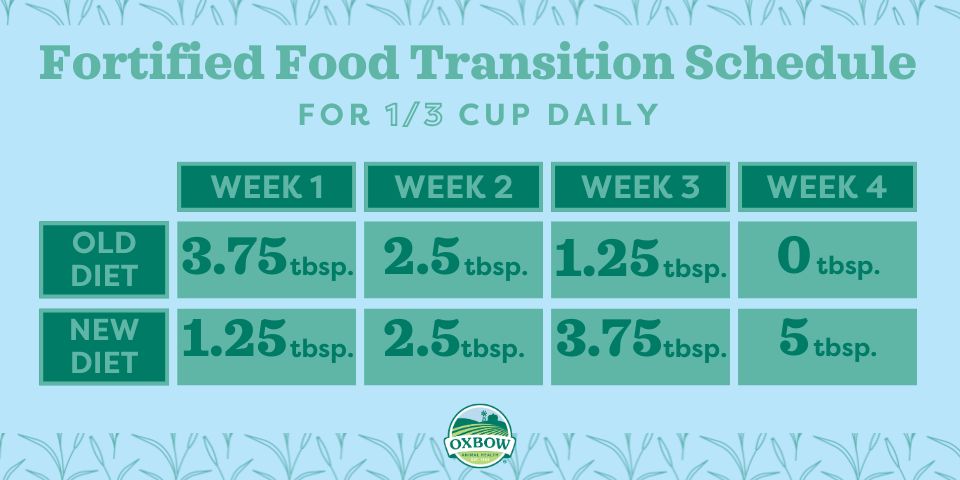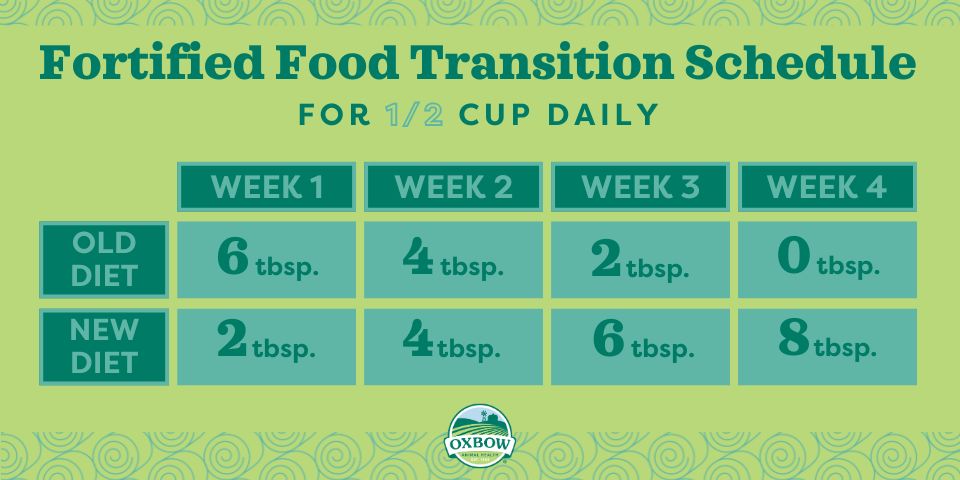By Dianne Cook, LVT
Updated: June 3, 2024
While variety is beneficial when it comes to daily staples like fresh greens and veggies, consistency is key when it comes to your small exotic mammal’s fortified food. But what do you do if your little loved one needs to transition their pelleted diet to a different life stage or brand? In this article, we’ll explore reasons to consider changing your pet’s diet, potential benefits of transitioning, and how to properly and safely transition your pet’s diet.
Reasons to Consider Changing Your Pet’s Diet
There are numerous reasons why you may want to change your small herbivore’s fortified food. Perhaps your rabbit is battling a chronic illness, or you have a guinea pig that is now over 6 months of age and needs to move away from young guinea pig food, or your veterinarian recommended a nutrition overhaul for your chinchilla. Maybe your hamster is a recent addition to the household and was previously fed a diet primarily consisting of seeds and dried fruits. Maybe you’re just looking to switch to a higher-quality pelleted food for your gerbil.
Regardless of the reason, a proper diet transition for your exotic mammal is essential to ensure your beloved companion can seamlessly take to the new food without gastrointestinal upset or pellet refusal.
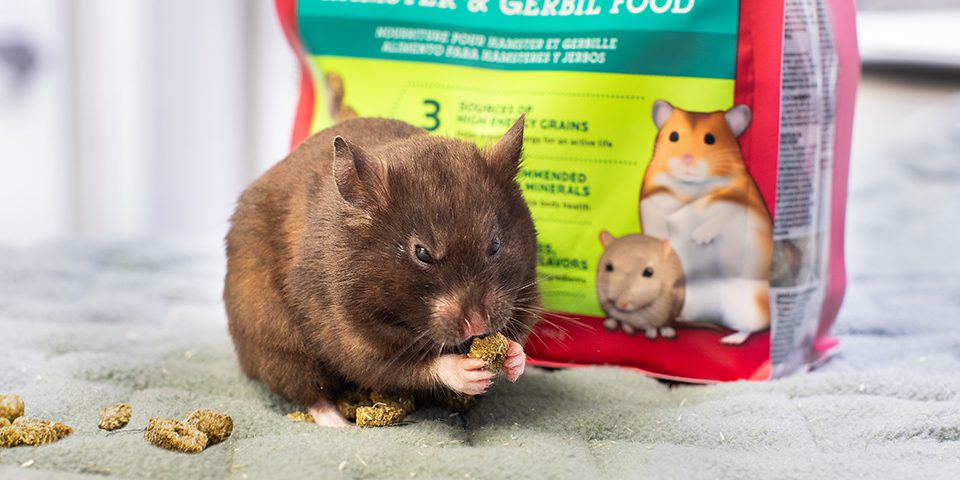
The Benefits of Transitioning Your Pet’s Diet
As many parents of small exotic mammals know, the specialized bacteria living within small exotic mammals’ digestive tracts are very sensitive to even subtle changes in their environment, diet included. Minor disruptions to your pet’s gut microbiome can lead to serious health issues like loose stools or gastrointestinal stasis.
Though two diets may appear similar when visually compared, the ingredients, formulas, and nutritional profiles can be quite different. These differences necessitate an adjustment phase. It is much safer and easier on pets and their digestive tracts to do a gradual food transition.
Small herbivores such as rabbits, guinea pigs, hamsters, gerbils, and chinchillas are concentrate selectors by nature, which means they tend to choose the most tasty, calorically-dense piece of food first when given a variety to choose from. As prey species, this tendency served their wild ancestors well, helping to ensure they consumed the most nutritionally dense morsels for bursts of energy to escape from predators. In a domesticated setting, however, this hard-wired behavior can pose a challenge for diet transitions. A gradual diet transition allows your pet to get used to the different textures, flavors, and aromas of their new food and leads to lower chances of food refusal.
How to Properly Transition Your Exotic Mammal’s Diet
Properly transitioning your small pet to a new food, especially from a muesli mix (a mixture of seeds, nuts, pellets, and colorful mystery pieces) to a uniformly nutritious pelleted diet is a process that takes time and commitment to complete.
Though many pet parents have heard of, and even completed, the standard 7-day diet transition with their dogs and cats, small exotic mammals (herbivores) need quite a bit more time to adjust to a new diet. During this process, patience and persistence are key.
When transitioning diets, we strongly encourage pet parents to follow a minimum of a 4-week transition schedule. This drawn-out, gradual process gives your little one a good opportunity to become familiar with the characteristics of their new food.
Transitioning between diets can be confusing, but when discussing a feeding volume as small as one-eighth of a cup, the difficulty can be amplified. It is important to always use a measuring device to ensure you’re offering the correct amount of food, as over-feeding pellets is a common nutritional issue that can lead to obesity.
Below you will find diet transition charts to walk you through the transition process at our most commonly recommended feeding volumes.
Transitioning Between Brand Lines and Life-Stages
Oxbow offer multiple premium food options and life-stage diets to meet the unique needs and preferences of as many pets and their pet parents as possible. Check out our side-by-side look at Oxbow foods for a quick overview of the differences between our fortified food lines.
Though all Oxbow foods are nutritionally complete, each line takes its own individual ingredient path to achieve a premium nutritional profile.
The ingredients from one particular fortified food product to another result in different in tastes and aromas. We humans are often unable to detect these subtleties, but our small friends’ have the hardwired instinct to detect small changes in their environment. Because of this, small herbivores may refuse a food with which they are unfamiliar, even if it is produced by the same company. This is why it’s critical to follow the appropriate transition schedule outlined above when transitioning between Oxbow diet lines, or from a young formula to an adult diet.
We highly recommend that pet parents not wait until they’re completely out of one bag of food to purchase another. There are naturally occurring variations in ingredients that may result in slight differences in a food’s taste, aroma, and texture, even within the same diet, and at times this can be enough to upset our selective friends. Blending foods from one bag to another can help prevent your small pet from refusing to eat their fortified food.
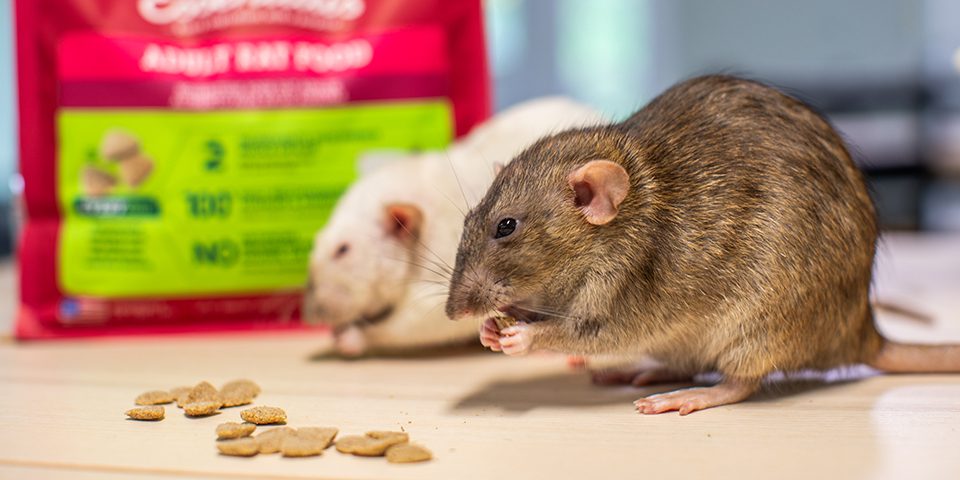
Blending Your Exotic Mammal’s Food
Blending one bag of food into another can help broaden your pet’s palate by regularly experiencing small variations in tastes and aromas. This simple step can help limit picky eating tendencies.
This process does not have to be as detailed and drawn out as a full diet transition. Once you are down to about a week’s worth of feedings in one bag, begin transitioning to the next by adding enough food from the new bag to the old bag to make a 50% new /50% old mixture.
This is a good idea regardless of what brand of food you feed, and should also be standard practice between hay bags to curb a finicky response.
Monitoring Your Pet’s Food Transition
Once you’ve started your pet’s diet transition journey, continue to monitor your little one closely for any changes in normal behavior or routine. One of the best ways to do this is by keeping a close eye on their fecal output.
Some changes in fecal color may be noted, especially if the ingredients between the two diets are different, but fecal consistency, size, and frequency should remain relatively constant. If you notice your pet is starting experience loose stools, small or unusual-shaped fecal pellets, or diminishing fecal production all together, stop the diet transition and contact your trusted veterinarian as soon as possible.
The same is true if your small pet has stopped eating, has become withdrawn or less active, or begins to show signs of gastrointestinal discomfort. As prey species, small herbivores are naturally hard-wired to hide signs of disease or illness, so it is always best to have a discussion with your exotic veterinarian if these kinds of changes are noted.
Rushing a diet transition can lead to digestive upset and blatant diet refusal, so remember to be patient with the process and with your small friend. Whatever the reason behind your exotic mammal’s updated diet, the best way to ensure a smooth and successful diet transition is to plan ahead and make sure the process is gradual and positive for everyone involved. Most importantly, ensure your veterinarian is kept in the loop and is consulted if any changes are noted in your kiddo’s feces, appetite, or overall demeanor.
Food Transition Tips and Tricks
There are many tactics that can be employed to help your pet tolerate a food transition. We include some tips and tricks below and hope these help ensure a quicker, smoother transition for you and your small pet.
- Add chopped up pieces of their favorite greens or veggies to the blend of new and old pellets, essentially making a “pellet salad.”
- Mix a small amount of fragrant herbs like basil, cilantro, and parsley to encourage your little one to sample new pellets.
- Stay consistent with your feeding method during the transition period. For instance, if you normally feed pellets via a food bowl, continue offering pellets during the transition period via a bowl. If your pet is used to foraging for pellets in a snuffle mat, make sure to continue to use a snuffle mat during the transition period.
- Only change your pet’s pelleted food out once daily. Make sure to give your pet a chance to come back to their food throughout the day to sample it, rather than removing it before they have a chance to adjust to the food’s different smell, taste, or texture.
- Don’t add any additional old food to your pet’s bowl throughout the day if they have left the new food behind. Stay strong in not overfeeding your pet’s pelleted food. By overfeeding you not only risk your pet gaining an unhealthy amount of weight, but you also signal to your pet that other pelleted food will be made available to them if they turn their nose up at the new food.
- Make sure your herbivore has unlimited access to hay while you’re transitioning their pelleted food. This will help ensure that even if they refuse their pelleted food at first, they still have a constant food source to keep their GI tracts moving.

